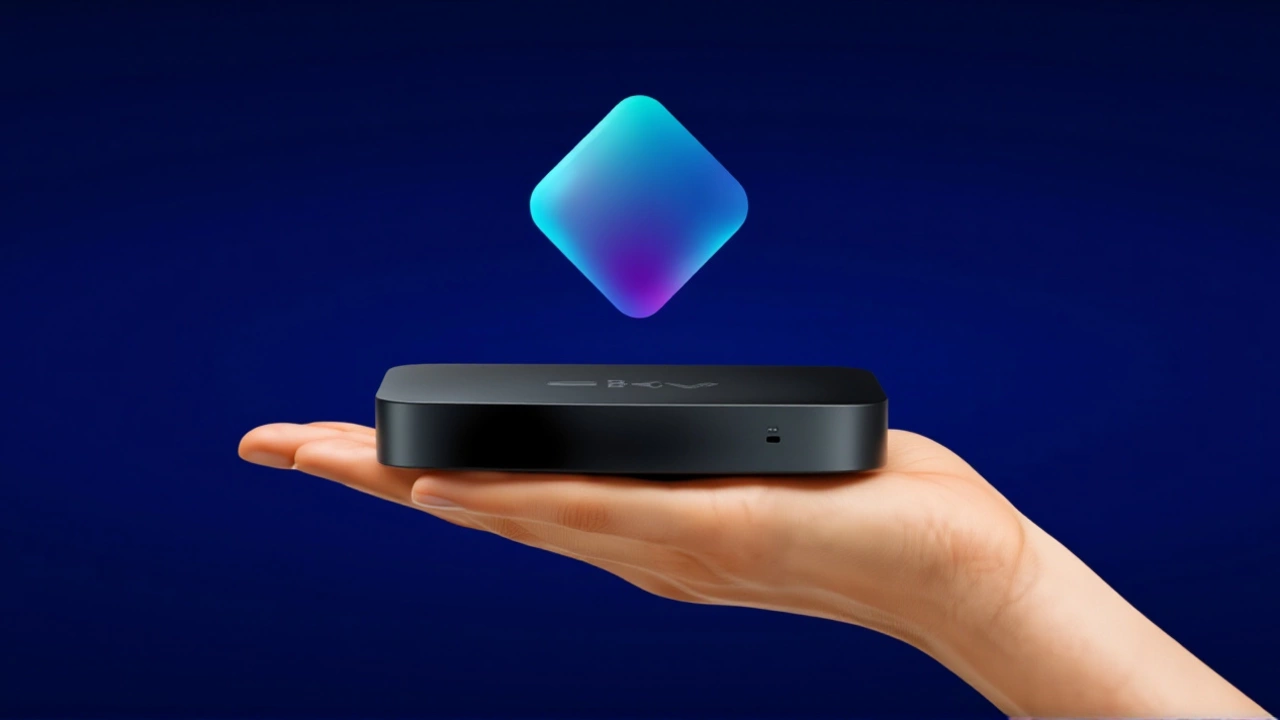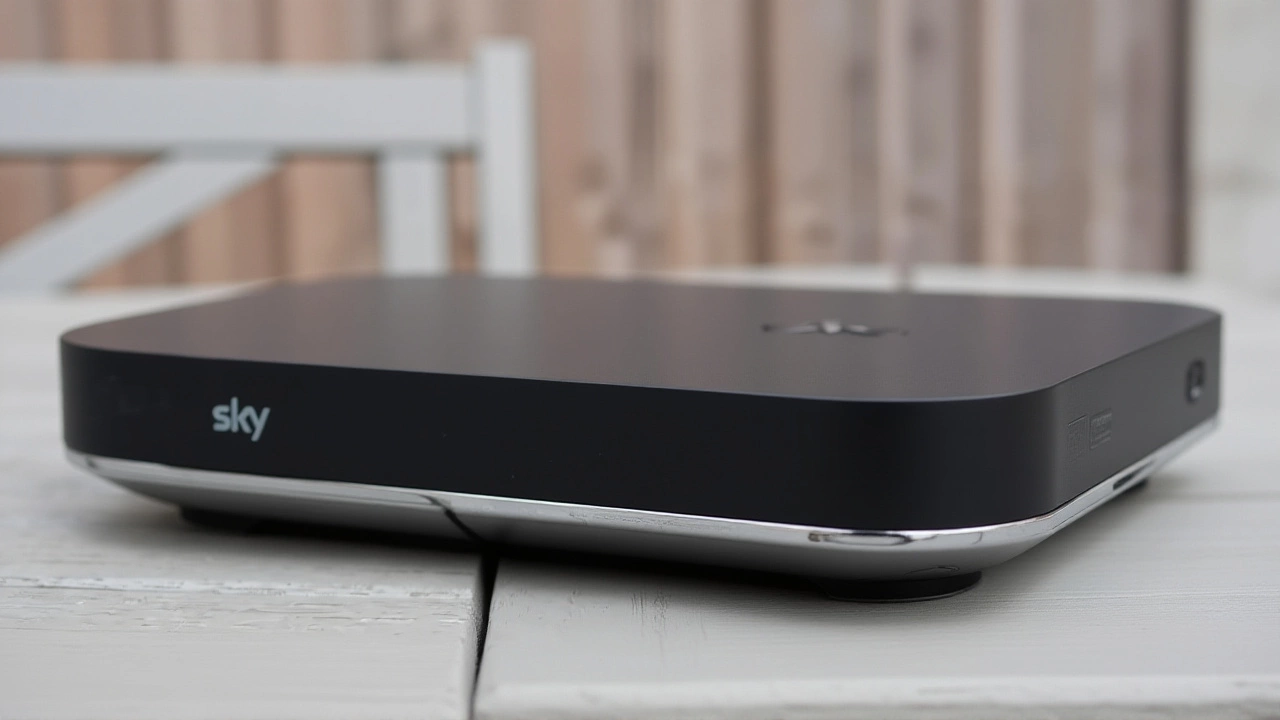Sky Whole Home Launch Lets UK Viewers Stream TV to Every Room
 Oct, 12 2025
Oct, 12 2025
When Dan Howdle, a senior writer for Best Broadband Deals, reported on 2 June 2025 that Sky has re‑branded its multi‑room offering, the news felt like a fresh breeze for anyone still wrestling with clunky satellite boxes.
Sky, the UK’s telecom heavyweight, introduced Sky Whole HomeUnited Kingdom as a bolt‑on service for its newer Sky Stream platform. For a flat £12 a month on a 31‑day rolling contract, subscribers can add a Sky Stream Puck to any HDMI‑enabled TV and instantly pull the full Sky experience into another room.
Historical Context – From Sky Q Minis to Stream Pucks
Back in the Sky Q era, the multi‑room solution was called Multiscreen. It hinged on the bulky Sky Q Mini boxes – essentially stripped‑down set‑top boxes that leapt off the main unit’s processing power. Those Minis cost £15 a month plus £50 each, and you could juggle only up to four per main box, with strict limits on simultaneous use. As Dan Howdle noted, the system was “always a little bit… how to put this… bad.”
Fast‑forward to 2025, and Sky has ripped out the satellite dish altogether. The new Whole Home model relies on broadband‑based streaming, sidestepping the heavy wiring and dish‑pointing headaches that haunted earlier setups.
How Sky Whole Home Works
Subscribers already on Sky Stream or the companion Sky Glass TV can simply add the Whole Home add‑on. The first month’s fee (£12) automatically includes one extra Puck – a compact, plug‑and‑play dongle that connects to any TV’s HDMI port. Once plugged in, the Puck pulls the same Sky menu, channel lineup, and apps (BBC iPlayer, Netflix, Spotify) you see on your primary device.
If you need more than one additional Puck, Sky charges a £39.95 set‑up fee per extra unit, but the monthly fee stays the same regardless of how many Pucks you deploy, up to a ceiling of six Pucks and three Sky Glass screens per address.
Pricing, Limits and Device Caps
- Monthly Whole Home add‑on: £12 (31‑day rolling)
- First extra Puck: included
- Each additional Puck: £39.95 one‑off set‑up
- Maximum per household: 3 Sky Glass TVs + 6 Sky Stream Pucks
- Includes Sky Go Extra – watch on up to 4 devices away from home at no extra charge
Technical Requirements – The Broadband Math
Sky’s own specs say a household needs at least 25 Mbps download speed for the first Sky Stream or Glass device, plus an extra 5 Mbps for every additional Puck. So a family that wants a main box and two extra Pucks would need a minimum of 35 Mbps. Below that, you might notice buffering or lower picture quality, especially if multiple streams run simultaneously.

Side‑by‑Side: Sky Whole Home vs. Sky Q Multiscreen
Here’s where the comparison gets juicy:
- Hardware: Whole Home uses lightweight Pucks; Q Multiscreen relied on heavyweight Mini boxes.
- Connectivity: Pucks stream over Wi‑Fi (or wired Ethernet if you prefer); Minis needed a physical link to the master Q box.
- Cost: Whole Home is £12 / month with free first Puck; Q Multiscreen was £15 / month plus £50 per Mini.
- Scalability: Up to six Pucks (plus three Glass TVs) vs. a maximum of four Minis per main box.
- Performance: Pucks draw directly from your broadband, avoiding the processing bottlenecks that could slow down multiple Minis.
In short, the new service is not just a cosmetic rename – it’s a full‑fledged upgrade in architecture.
Market Impact – Why This Matters for UK Viewers
Sky Stream has been gaining steam, nudging both traditional satellite rivals and newer OTT players. Because Whole Home removes the satellite dish entirely, it opens the door for renters or homeowners who can’t or don’t want a dish on their roof. The lower price point and contract‑free flexibility also appeal to cord‑cutters who still crave Sky’s premium sports and movie bundles.
Analysts at TechMarket Insights estimate that Sky Stream’s subscriber base could grow by roughly 12 % in the next twelve months, driven largely by Whole Home’s multi‑room convenience. If the trend holds, Sky could see a notable dip in new Sky Q sign‑ups – the latter is effectively closed to fresh customers.
Future Outlook – What’s Next for Whole Home?
Sky hasn’t stopped at just adding Pucks. The company hinted at a forthcoming firmware update that would let Pucks act as mini‑media hubs, supporting local DLNA playback and smoother integration with smart‑home assistants like Amazon Alexa. If those rumors pan out, the Whole Home ecosystem could become a central piece of the UK’s connected‑living puzzle.
For now, the biggest story is simple: you can stream Sky’s full catalogue to any TV in your house without digging a hole for a dish or wrestling with tangled cables. That’s a win for anyone who’s ever wanted to watch the Premier League in the kitchen while the kids binge cartoons upstairs.
Frequently Asked Questions
How does Sky Whole Home differ from the old Sky Q Multiscreen?
Whole Home uses lightweight Sky Stream Pucks that stream over your broadband, while Q Multiscreen relied on Mini boxes tethered to a main Q set‑top box. The new service is cheaper (£12 / month vs. £15 + £50 per Mini) and can support up to six Pucks, eliminating the processing bottlenecks of the old system.
What broadband speed do I need for multiple Pucks?
Sky recommends at least 25 Mbps for the first device and an extra 5 Mbps for each additional Puck. So a setup with a main Sky Stream and two extra Pucks would need roughly 35 Mbps downstream to avoid buffering.
Can I add Whole Home if I already have Sky Glass?
Yes. Whole Home works as a bolt‑on for both Sky Stream and Sky Glass subscriptions. Adding the service gives you an extra Puck at no extra monthly cost, letting you extend Sky’s UI to any TV with HDMI.
Is there a contract lock‑in?
No. Whole Home runs on a 31‑day rolling contract, so you can cancel or add the service month‑to‑month without penalty. This flexibility is part of Sky’s effort to attract contract‑averse viewers.
What future features might Sky add to the Puck?
Industry sources suggest Sky is working on a firmware update that will let Pucks double as DLNA media hubs and integrate more tightly with voice assistants like Alexa, potentially turning each Puck into a smart‑home control point.